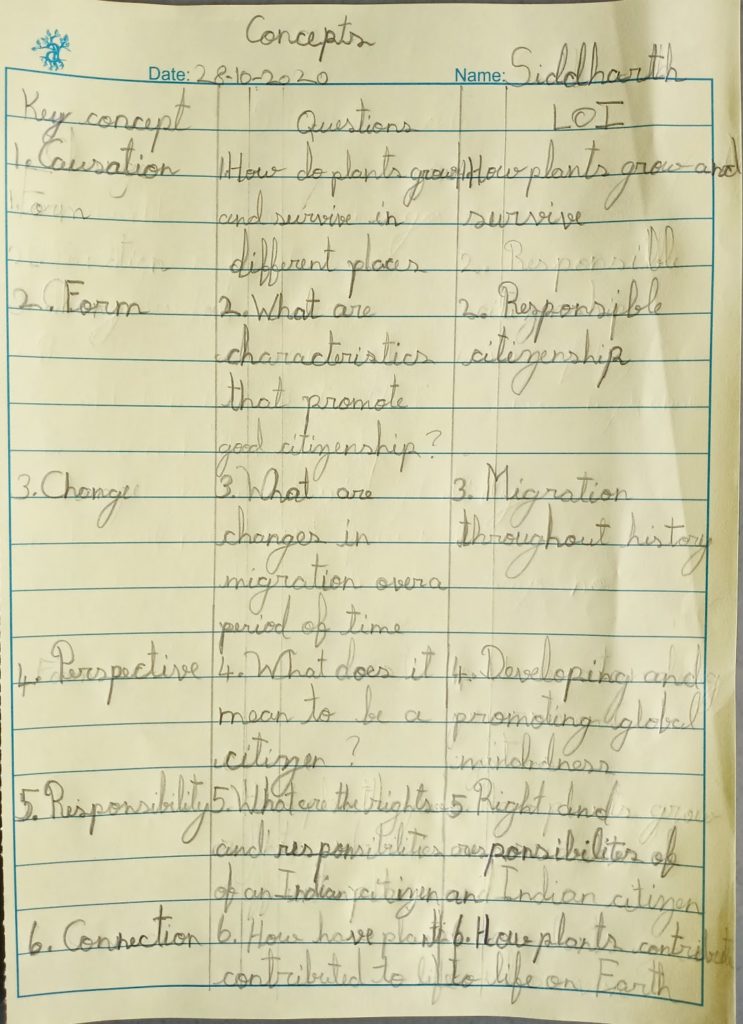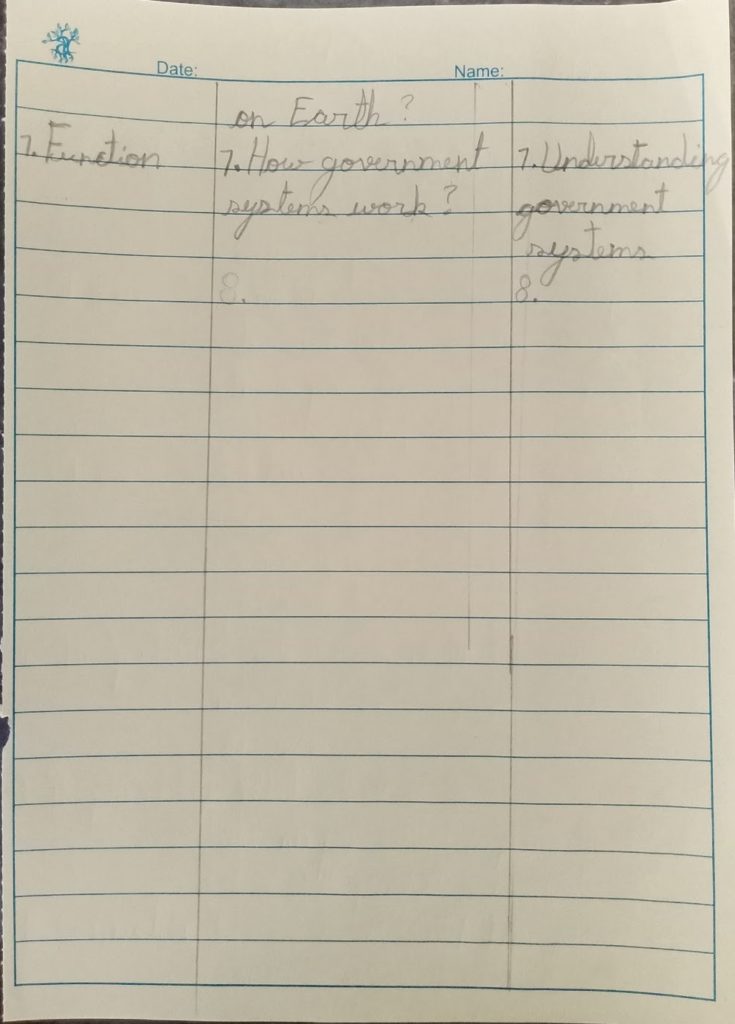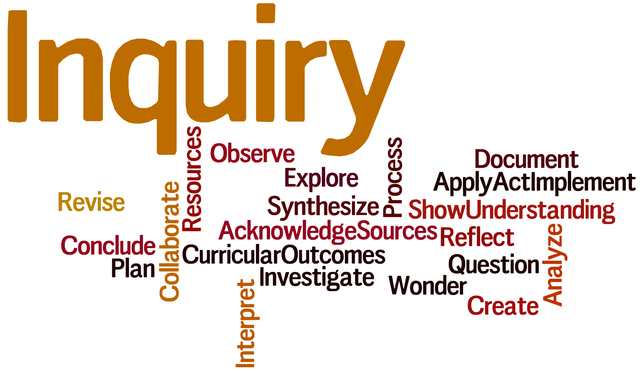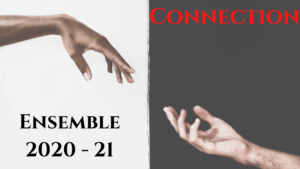A recent conversation we had with our guests Dr Lavanya Rajagopalan and Mr. Rahul Gannamani – ‘The grey matters’ got me thinking a little further about neuroplasticity. In simpler words, neuroplasticity also known as neural plasticity, or brain plasticity, is the ability of neural networks in the brain to change through growth and reorganization. (Definition – Neuroplasticity Journal).
In her path-breaking work, psychologist Dr. Carol Dweck coined the terms ‘growth mindset’ and ‘‘fixed mindset’ to describe underlying beliefs that determine how our brains can be trained towards a practice of neuro plasticity, or the lack of it.
What does neuroplasticity and growth mindset have to do with Inquiry?
Well, everything!
In the first part of this series “The Journey into Inquiry” we spoke about Inquiry being a mindset, and not a single practice, while in the second, “When the guests come home” we discussed one powerful Instructional strategy – of having guest lectures .
In the third and final part of this series, we will look into how the development of a growth mindset is built into an Inquiry-based pedagogy. How can we cultivate the practice of a growth mindset, and hence, neuroplasticity, that is so integral to the notion of being an Inquirer? What does this mean in our classrooms? This is what we will be examining in the third part of this series.
“Curiouser, Curiouser” – Lewis Carroll, Alice in Wonderland
Remember when we were little and our minds were filled with this 6-letter word – WONDER!
An inquiring mind is one filled with wonder and awe. Wonder towards the little things around us: Why does this vessel make this noise? , wonder when we look out of the window: Why are the calls of the different birds different?, wonder for how the world goes around: Why do we have the Sun telling us that it’s morning?
Children are naturally born curious, their minds filled with wonder, awe, fascination and astonishment. What happens as we grow older? The world does not suddenly stop being filled with things to wonder about, nor do we become so knowledgeable that we no longer have anything that we don’t have answers for. What really happens is that we become habitually trained towards conforming and learning to provide one correct answer to a question – the exact opposite of what makes a growth mindset.
One of the most important and crucial things then, as a teacher, and as a parent, is to keep curiosity alive. In Inquiry classrooms, this happens in a variety of ways.
Many a time, teachers (and then students begin to model this, as well) bring in an object of curiosity into their classrooms, that generates questions and wonderings.
Yet other times, the entire classroom environment is set to ensure that the environment then becomes the third teacher, sparking that curiosity and interest and generating further conversations.

“If I had an hour to answer a question and my life depended on the the solution, I would spend the first 55 minutes determining the proper question to ask, for once I know the proper question, I could solve the problem in 5 minutes” – Albert Einstein
If curiosity is a spark plug, then questioning is like the engine that keeps the car going!
A questioning mind is another hallmark of an inquiring mind; a mind that is flexible enough to accommodate new learning. Questioning helps us recognise the iceberg model – what is seen is really only the tip, and delving deeper to examine the layers beneath, is essential to growing our understanding, or in other words, practicing neuroplasticity.
In Inquiry-based classrooms, many teachers have a “Wonder Wall” alive in their classrooms – a space where students can park their ponderings, their questions and their thirst to find out more.
Teachers actively practice and model the art of asking factual, inferential and universal questions – sometimes, called the close-ended and open-ended questions. Students learn through modelling and often “imitate” this, as they learn to question.


For younger children, teachers model the art of questioning, and provide children with scaffolds that will help them practice questioning.
What is wonderful about Curiosity and Questioning are that they are cyclical – one leads to the other, forming a repetitive pattern.
Hand-in-hand with questioning goes the idea of listening. In inquiry, the primary idea of listening is to seek to understand – to challenge what we already know & understand and to accommodate new learning. This calls for tremendous patience, courage and humility – the patience to listen, the courage to accept that we hold one-sided perspectives and the humility to embrace changing thoughts.
Self-reflection, self-assessments and peer assessments then automatically become intertwined into classroom engagements and discussions. What kind of a learner have I been today? Was I able to demonstrate empathy? Open-mindedness?
Was he a good Communicator? What has she done or said that demonstrated that she is learning to manage her time and space?
“You cannot make people learn. You can only provide the right conditions for learning to happen.” ~ Vince Gowmon
Ultimately, those words of Vince Gowman sums up what an Inquiry-based pedagogy does. Adopting Inquiry as a way of teaching-learning provides the environment for students to learn through questioning, thinking, reflecting and taking actions that arise out of this process.



